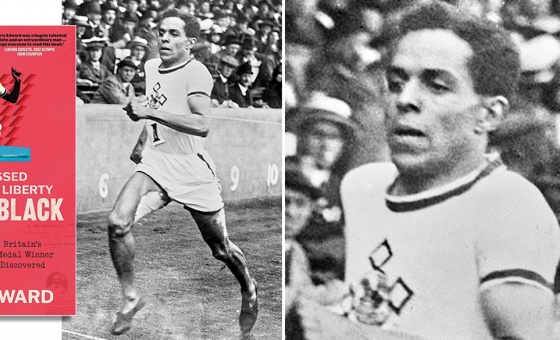This is the last article you can read this month
You can read more article this month
You can read more articles this month
Sorry your limit is up for this month
Reset on:
Please help support the Morning Star by subscribing here
Neither the term "extraordinary rendition" nor its present-day enabling international machinery - the secretive US flights, "black" interrogation sites and British government collusion - were operational in 1934.
But the attempt of the Canadian authorities in January that year to deport Yugoslav communist Tom Cacic from Canada via Britain to his homeland, where execution was likely to await him, was a vicious abuse of power in which the British government shared.
Yugoslavia was a dangerous country at that time for socialists and Tom Cacic had taken refuge in Canada from political repression at home.
He soon became a leading member of the Canadian Communist Party and had been arrested for political activities with the whole of the leadership of the party and given a two-year prison sentence.
In early January 1934, having served his time and having been deported from Canada, he was under guard on a liner - Montcalm - bound for Britain.
On arrival at Liverpool docks, the Montcalm delivered him to waiting British police. He was to be dispatched - with their assistance - onward to Yugoslavia. The whole affair was shrouded in official secrecy.
But as Cacic was about to be taken off the ship, observers were in readiness close by.
They had got wind of Home Office complicity in the deportation plot, of the time of the Montcalm's arrival and that Cacic was on board.
They were activists of International Labour Defence (formerly International Class War Prisoners Aid), led by communists Bob and Sarah Lovell, whose London base at the time was 14 Doughty Street, close to Gray's Inn Road, London.
ILD's job was to protect the rights of those persecuted for political reasons.
One of the Liverpool watchers, as Cacic was led off the ship, was Jack Jones, a young Liverpool docker already with a significant role in the Transport and General Workers Union and in the Liverpool Trades Council.
Jones had been briefed by local labour lawyer and socialist Sydney Silverman who became well-known as a passionate opponent of capital punishment and was Labour MP for Nelson and Colne from 1935.
As the handcuffed Cacic was about to be passed into a Black Maria van, Jones - who many years later described the incident in his autobiography Union Man - shouted to Cacic, to the stunned surprise of the police, telling him to ask for Silverman the lawyer.
The police van was followed by the observers' car to a Liverpool police station and Silverman met Cacic whose next port of call under police charge was to be Harwich.
Home Office involvement in the rendition conspiracy had been thus unmasked and Cacic's removal to Harwich was delayed by 24 hours giving his helpers valuable time to prepare.
The Daily Worker declared on January 11 1934 that the Canadian authorities had failed in their attempt to keep his departure a secret and that it was the intention that Cacic should be passed on.
Two days later it said: "Comrade Cacic is still in extreme danger."
At the Harwich end of the ILD operation, a ship was to take Cacic to the Belgian port of Antwerp as arranged with Belgian police.
But providence in the form of thick fog intervened and the ship was diverted to the Hook of Holland.
According to accounts given in the memoirs of communists Len Wincott - a prominent leader of the Invergordon mutiny in 1931, subsequently a full-time worker for ILD and author of Invergordon Mutineer - and of London East Ender Joe Jacobs, an unnamed and well-briefed rescuer masquerading as an solicitor travelled post-haste to Holland to meet the boat and to deter Cacic's detention and onward transport towards Yugoslavia.
A Dutch immigration official was, says Wincott, informed by this "lawyer" that the British police were dumping a dangerous communist criminal on to Dutch territory and was quickly frightened into insisting on his return to Britain.
Cacic's return to Harwich and the flagrant illegality of his continued detention left the Home Office gasping and helpless under pressure from representations from Cacic's ILD supporters.
They gained access to him at Harwich, and gave him £5 plus a hastily obtained entry visa to the Soviet Union. One of those involved in countering the rendition attempt was none other than the editor of The Week, Claud Cockburn, who was to be Daily Worker correspondent in Spain two years later and future author of a remarkable autobiography I, Claud.
Before long Cacic was in Vienna where he obtained a rail ticket to the Soviet Union, apparently helped by the administrative disaray in Vienna due to the bloody repression of socialists there in mid-February by the fascist regime of chancellor Dollfuss.
On March 22 the Daily Worker reported Cacic's safe arrival in the Soviet Union.
Cacic, according to Len Wincott, later fought in Spain with the Yugoslav volunteers and with Tito's partisans in WWII. He died in 1949. However, Jones, on the other hand, notes that Cacic was killed in Spain.
Whatever the exact facts about Cacic's later life and death, both accounts attest to his dedication to socialism and anti-fascism.
More important, 80 years later it must be highly appropriate to celebrate the international solidarity shown by socialists in Britain in winkling Cacic out of the clutches of a Home Office set on delivering him into the hands of a reactionary and brutal regime in Belgrade.
The episode is an extra reminder to us that, in 2014, international pressure against the shameless gangsterism of CIA-directed extraordinary rendition and for the release of Shaker Aamer from Guantanamo Bay must continue with energy redoubled.








